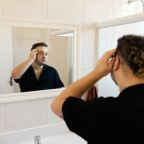
Plymouth residents are top 10 most at risk of ageing from sun exposure
In new research conducted by the Clarins Beauty Daily team, Plymouth residents are 6th most at risk of skin ageing from UV rays. Based on the number of sunshine hours per UK city – this area in the SouthWest sees an average of 1,732 hours (72 days) a year according to Met Office data.
Whilst SPF is essential everyday as there is still risk irrespective of the weather – residents in Derry, Northern Ireland were the least at risk of sun damage, with the lowest hours of sunlight per year amongst all UK cities at 1,222 hours (51 days). Along with Derry, Glasgow was also one of the cities with the lowest risk, coming just ahead with a total of 1,234 hours on average a year.
In addition to Plymouth, other coastal cities in the UK also had high annual average hours of sunshine. Chichester was most at risk with 1,919 hours on average each year, Brighton & Hove came in 2nd place with a total of 1,892 hours and Southend-on-Sea came in 3rd place with a total of 1,884 hours. This means that without proper sun care, residents here are at even more risk of skin damage than other cities in the UK.
Top 10 UK Cities Most At Risk of Skin Ageing From UV Rays
(Annual Average Sunshine Hours)
-
Chichester - 1,919 hours
-
Brighton & Hove - 1,892 hours
-
Southend-on-Sea - 1,884 hours
-
Portsmouth - 1,772 hours
-
Canterbury - 1,737 hours
-
Plymouth - 1,732 hours
-
Southampton - 1,706 hours
-
Salisbury - 1,699 hours
-
Cardiff - 1,692 hours
-
Bristol - 1,658 hours
When looking at the 20 most populated cities in the UK, Southampton came in first place – with a total of 1,706 hours of sunshine a year. London, the UK’s capital and the most populated among these cities ranked 6th on the list – boasting a total of 1,559 hours of sunshine, or 65 days a year.
With a total of 1,670 hours (70 days), the South East had the highest average hours of sunshine per year out of all regions in the UK, meaning that residents living here are at the highest risk of UV exposure day-to-day. In comparison, Northern Scotland was the lowest with 1,104 hours per year or 46 days.
UV risk is usually at its highest between 10am and 4pm, as well as during the spring and summer months – so it's always best to avoid too much sun exposure during these times. Whilst the sun is not as intense on gloomy days, UV rays can still penetrate through the clouds, so it's still important to use adequate SPF throughout the year.
When it comes to skin damage from the sun, there are two types of UV light that impact this. Ultraviolet A (UVA) rays have a longer wavelength known to cause ageing, whilst Ultraviolet B (UVB) rays have a shorter wavelength which can burn the skin without SPF use. Overexposure to UV rays can lead to the development of wrinkles, texture, hyperpigmentation, broken capillaries, red blotches, brown spots and even lack of firmness in the skin.
In a 2017 Statista survey, 31% of men in the UK said they don’t wear sunscreen during the summer, even if they’re on a sunny holiday, compared to only 15% of women. In addition, this 2021 survey revealed that 37% of the male respondents reported that they never apply sunscreen when outside of their home. 31% said they use it some of the time and only 11% said that they always use it.
The experts at Clarins Beauty Daily advise: “Make sure you’re using protection no lower than SPF30 daily, even if you’re not directly in the sun. UV rays can streak through the windows of your home and car – and can even damage your skin on cloudy days. The damage from UV radiation is cumulative and therefore, sun protection is non-negotiable. When looking at the research, it's important that men also make more effort to use SPF and work adequate sun care into their skincare routines from day-to-day”











